让作品说话 访书法家尚云
- 2020-09-24 15:44:29
- 点赞量:11306
- 点击量:249859
- 作者:郝连成 Hao Liancheng
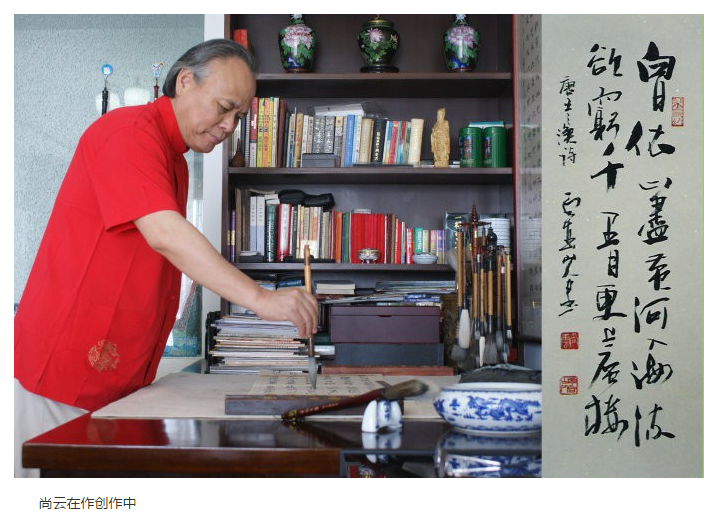
与尚云先生初次相识是2013年9月在太原纪念毛泽东诞辰120周年的国内著名书画家书画笔会上。当时他向展会提交的作品是一幅碑隶交融又夹篆味的长卷毛泽东词《沁园春·雪》。当主办方工作人员介绍这是中国著名书法家、中央书画研究院副院长时,尚云挥手一指在场的众位书画名家:这里是让作品说话的地方。
The first meeting with Mr. Shang Yun was in September 2013 at the famous calligraphers and painters' brush meeting in Taiyuan to commemorate the 120th anniversary of Mao Zedong's birth. At that time, the work he submitted to the exhibition was a long volume of Mao Zedong's Ci "Qinyuan spring · snow" with a blend of stele and official script. When the organizer's staff introduced that this was a famous calligrapher and vice president of the Central Academy of calligraphy and painting, Shang Yun waved to all the famous calligraphers and painters present: This is the place for the works to speak.
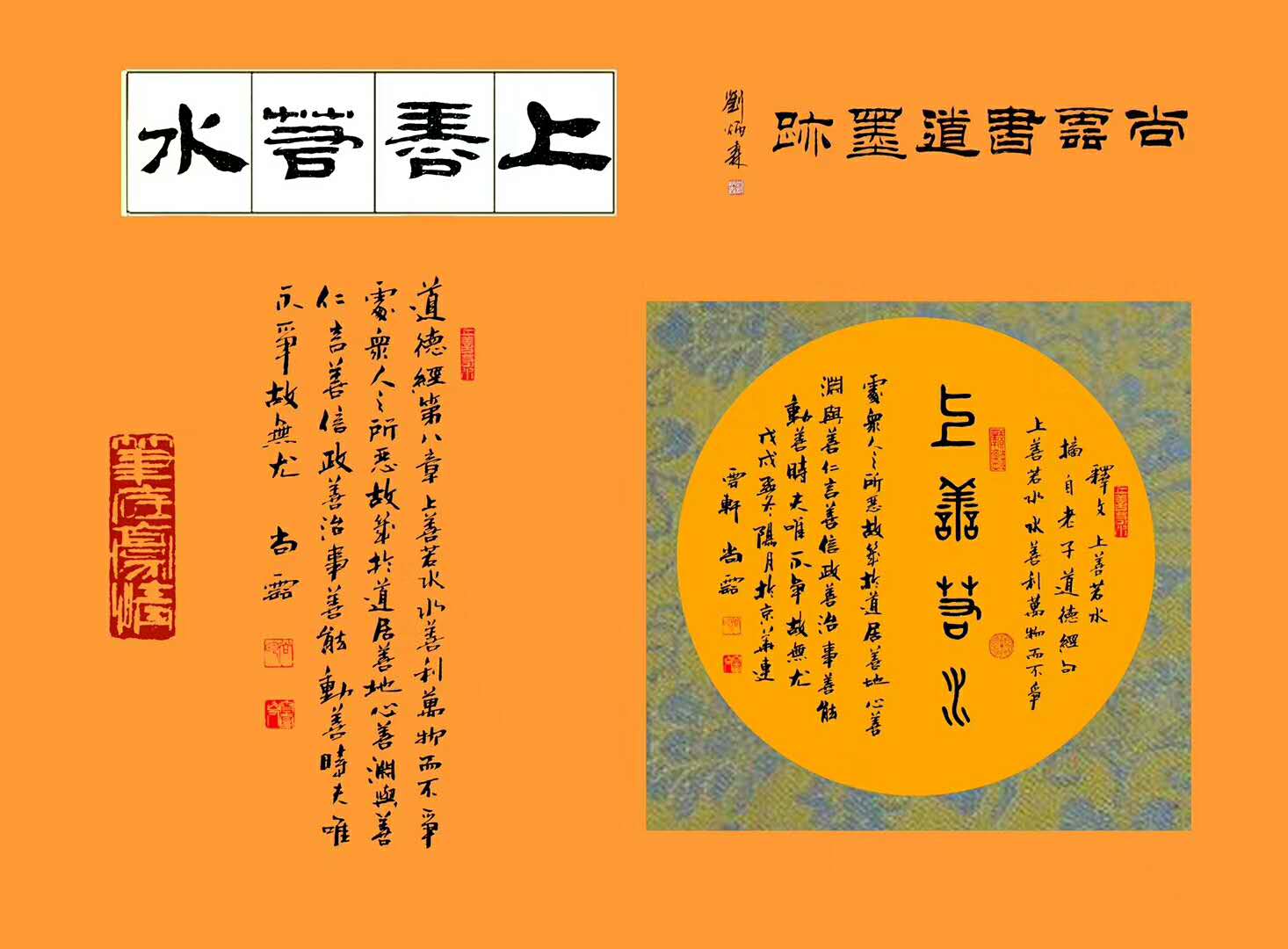
两个月后的深秋,在北京以“心中的太阳永不落”为主题的纪念毛泽东诞辰大型书画精品展会上,再次见到尚云给毛泽东的女儿李讷捐赠一幅“指点江山,激扬文字”作品后,他回答记者的采访还是那句:“让作品说话”。
Two months later in the late autumn, at a large-scale calligraphy and painting exhibition in Beijing with the theme of "the sun never sets in the heart" to commemorate Mao Zedong's birthday, he once again saw Shang Yun's donation of a work of "pointing to the country and inspiring words" to Mao Zedong's daughter Li na. He replied to the reporter's interview with the same sentence: "let the work speak.".
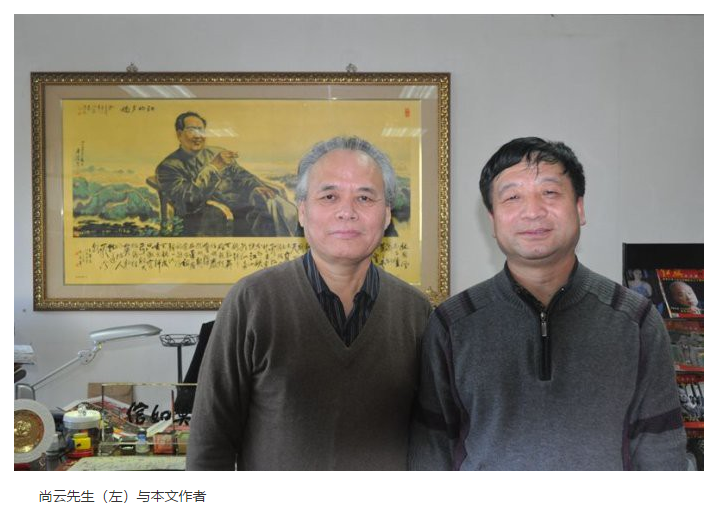
两次听尚云讲“让作品说话”都以为这是书法家的一种外交辞令,直至看到尚老师赠送的一本红旗杂社出版的《中央书画研究院副院长书画家尚云》特刊后,我才感受到“让作品说话”不仅是尚云先生的一种自谦,更透出了他在中国传统书法领域六十年来临古帖、拜名师、融历代百家之长,成当今书坛独秀的深深自信。
Two times I heard Shang Yun talk about "let the works speak" and thought it was a kind of diplomatic language of calligraphers. Until I saw a special issue of "shangyun, a calligrapher and painter, vice president of the Central Academy of calligraphy and painting" presented by Mr. Shang, I felt that "let the works speak" was not only a kind of self modesty of Mr. Shang Yun, but also revealed that he had been in the field of traditional Chinese calligraphy for 60 years Thanks to the famous teachers and integrating the strengths of hundreds of schools in the past, he has become the most outstanding self-confidence in today's calligraphy world.
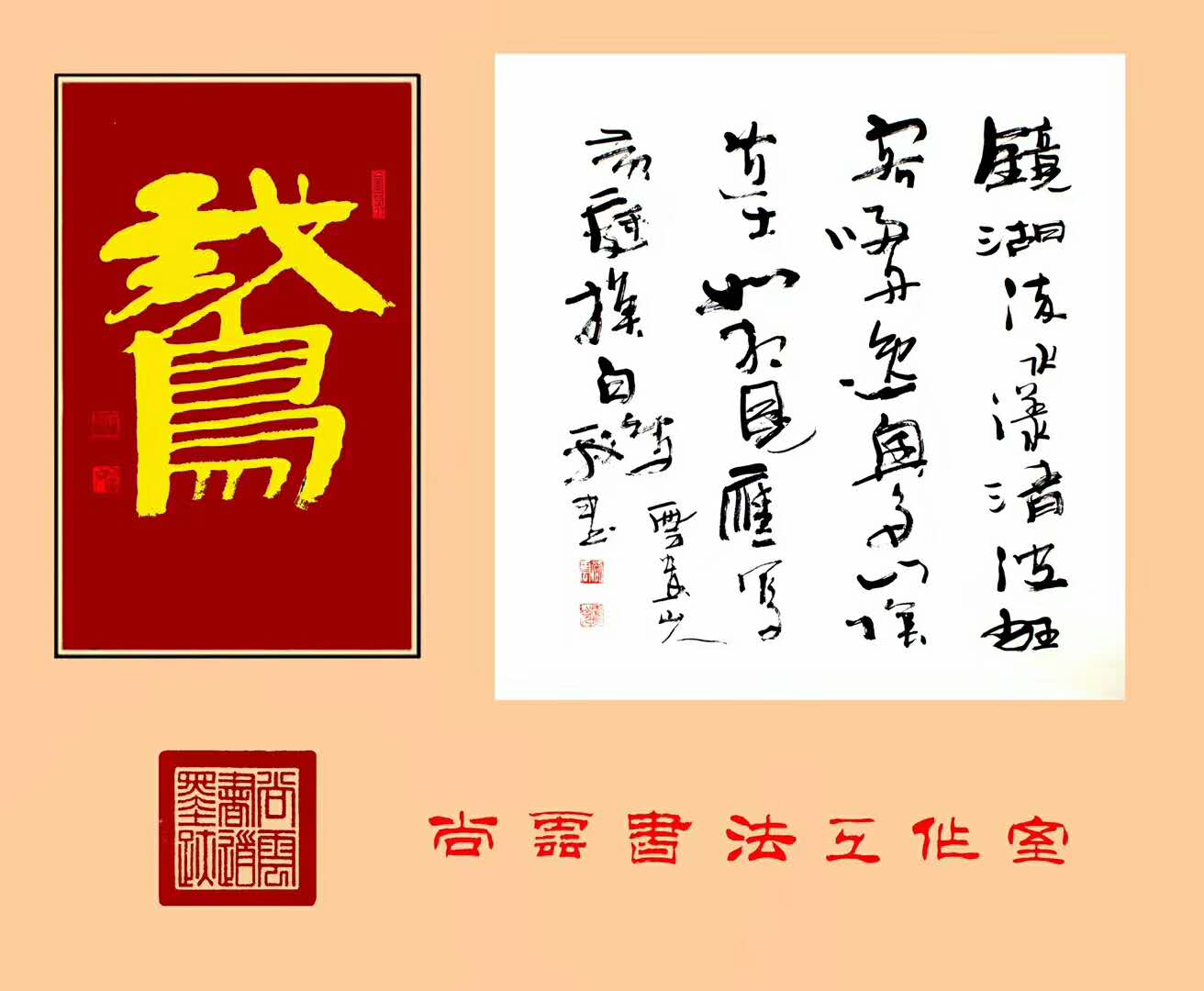
尚云先生是江苏省赣榆县人,1949年出生于山东省临沂市。六十多年来临池不辍,博采隶书、汉简、帛书、章草之长,涉猎历代名碑法帖。曾拜山东艺术学院教授、山东省美术家协会副主席、著名书画家黑伯龙先生为师,并得真传。先后得到了著名书法篆刻家陈左黄,著名书法家魏启后先生的指点。师承过山东艺术学院教授、著名书画家宗维成先生,主攻隶书、魏碑、行书、草书、汉简、章草。犹对《张迁碑》《孔羡碑》《张猛龙碑》《郑文公碑》、《张黑女碑》用功较深,也获益最多。
Mr. Shang Yun is a native of Ganyu County, Jiangsu Province. He was born in Linyi City, Shandong Province in 1949. Over the past 60 years, linchi has been learning from official script, Han bamboo slips, silk books and Zhangcao, and dabbled in famous stele and calligraphy of past dynasties. He was once a professor of Shandong Academy of art, vice chairman of Shandong Artists Association and a famous calligrapher and painter. Chen Zuohuang, a famous calligrapher and seal Carver, and Mr. Wei Qihou, a famous calligrapher, have been successively instructed. Mr. Zong Weicheng, a famous calligrapher and painter, has studied Lishu, Weibei, Xingshu, caoshu, Han bamboo slips and Zhangcao. In addition, he studied Zhang Qian stele, Kong Xian stele, Zhang Menglong stele, Zheng Wengong stele and Zhanghei female stele, and gained the most.
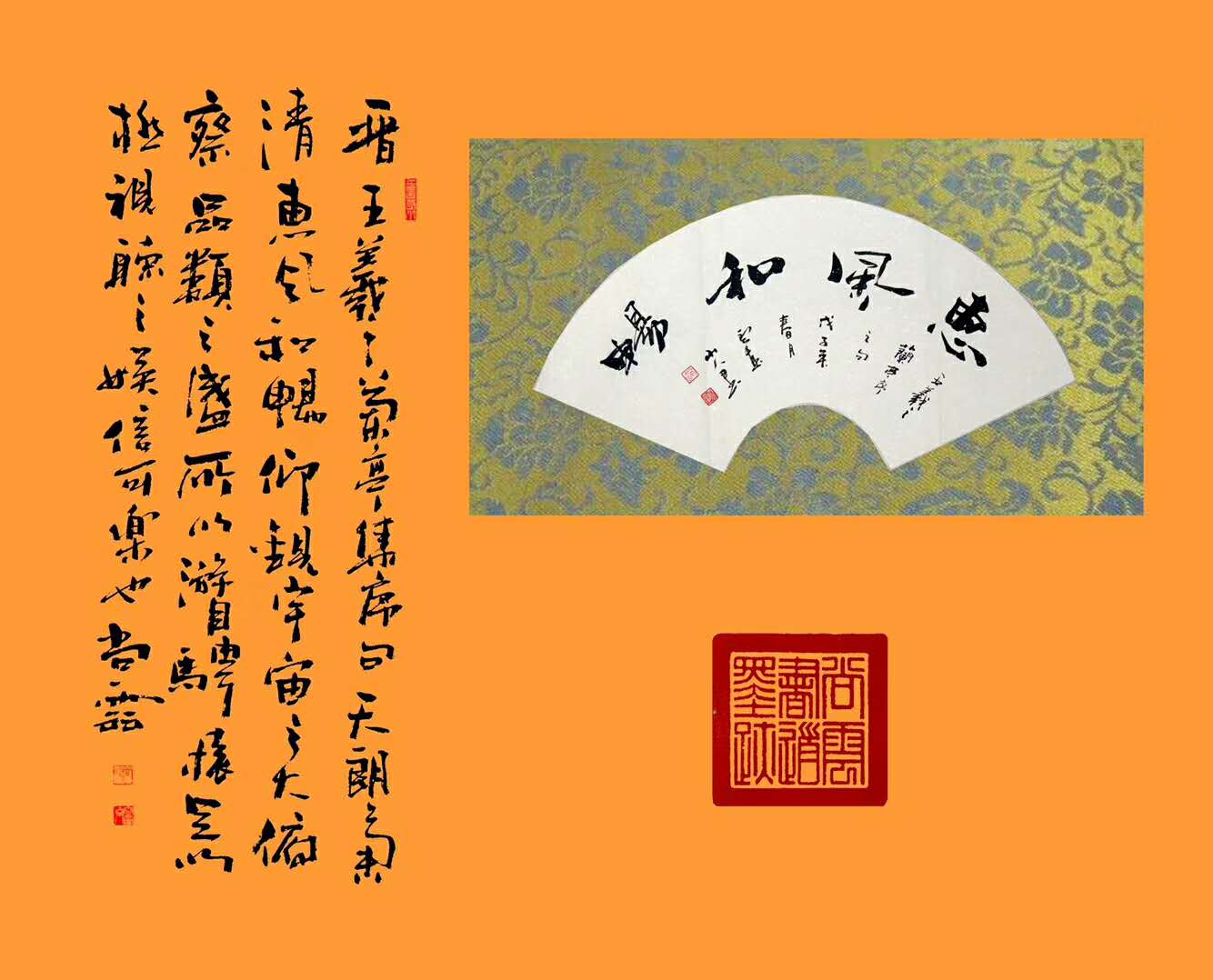
尚云认为,中国书法还是应以继承传统为主,多吸收古人的笔法和立意,创作出能宁神养性,教化人品的作品,而不能急功近利,去迎合浮燥。多写魏碑能培养人的挺拔端庄之气,多练隶书会让人稳重平和。魏隶交融则有老成持重而又不失灵动的感觉。他创作的“指点江山激扬文字”和“数风流人物还看今朝”横幅长卷都是这种效果。
Shang Yun believes that Chinese calligraphy should still be based on inheriting the tradition, absorbing more from the writing techniques and ideas of the ancients, and creating works that can calm the spirit, nourish the nature, and educate people's character, instead of being eager for quick success and instant benefit to cater to the fickleness. Writing more Wei steles can cultivate people's upright and dignified spirit, and practicing more official script will make people stable and peaceful. The blending of Wei and Li had the feeling of being mature and prudent without losing flexibility. His long banners of "pointing out the rivers and mountains and stirring up the writing" and "counting the celebrities and looking at the present" are all of this effect.

尚云练习书法可说是集合了古今众家之长。除对隶体魏碑常临不歇外,还按老师的要求,每半年换一种字帖,在临摹中吸取之精华。先后临写过二王、苏东坡、黄庭坚、米芾、张瑞图等名帖和孙过庭的《书谱》。对近代于右任、华世奎等名家也进行过悉心研究。并虚心到各地拜访请教现代名家前辈,到安徽合肥拜访肖龙士、张建中等老先生。去湖南长沙拜访李立先生,并一住八个月,按李立老先生的指教临写长沙马王堆三号墓出土的帛书,把汉隶、帛书、汉简进行揉合,形成自己清新典雅、苍劲雄浑、潇洒自如、意趣天成的书法个性和独特的艺术风格。说起他学习身边山东书法大师魏启后,他能把魏启后的作品模仿到以假乱真的程度。
Shangyun's calligraphy practice can be said to be a collection of the strengths of ancient and modern families. In addition to standing at the same time, there are many kinds of copybooks that are exchanged every six months according to the requirements of teachers. He has successively written such famous books as Erwang, Su Dongpo, Huang Tingjian, Mi Fu, Zhang ruitu and so on, and sun Guoting's Shupu. He also made a careful study of Yu Youren and Hua Shikui. He also went to various places to ask for advice from modern masters, and visited Xiao Longshi and Zhang Jianzhong in Hefei, Anhui Province. He went to Changsha, Hunan Province to visit Mr. Li Li, and lived for eight months. According to Mr. Li Li's instruction, he wrote silk manuscripts unearthed from tomb No. 3 of Mawangdui in Changsha. He combined Han Li, silk script and Han bamboo slips to form his own unique calligraphy style and unique artistic style, which is fresh and elegant, vigorous and vigorous, natural and natural. Speaking of his learning from Wei Qihou, the Shandong calligraphy master around him, he can imitate Wei Qihou's works to the extent of falsehood and falsehood.
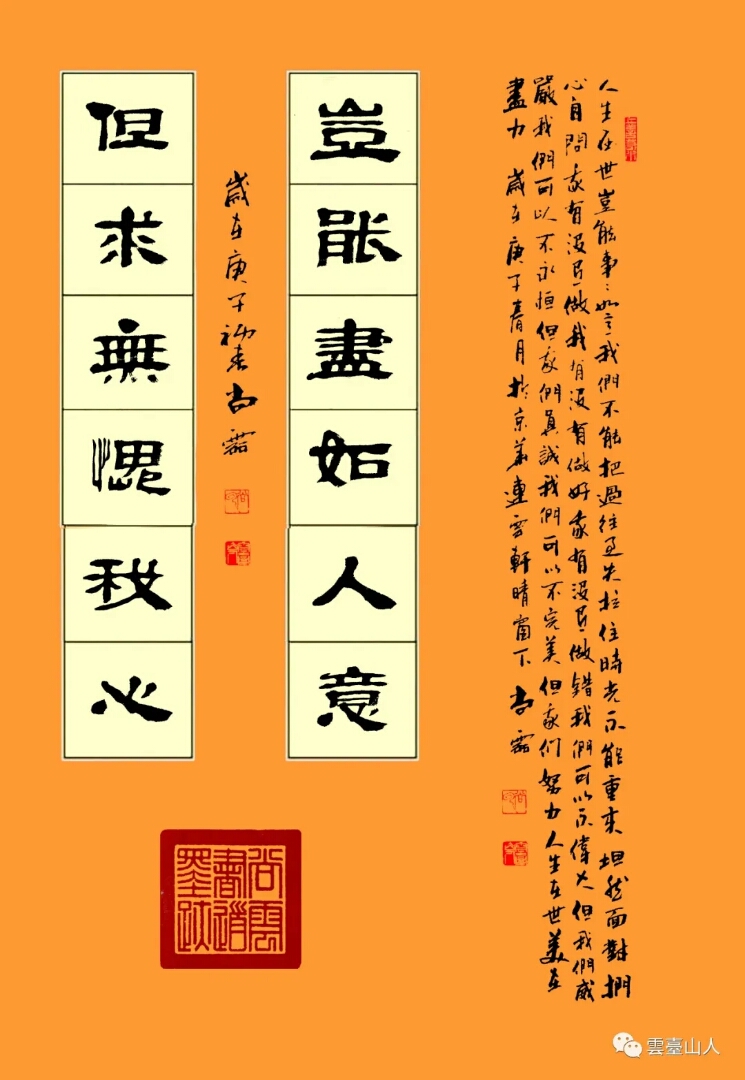
尚云先生的书法作品,虽圉于传统大距,但每篇都独具章法,各有姿容。横幅中堂《博雅》二字最能表现出尚云先生的独创风格,作品中既藏碑体的雄强变化,又夹着隶书的温柔儒雅,牵丝纽带,强弱呼应。结字时故用惊人之笔,达到了斜而不倒,险而不危效果。山东艺术学院宗维成教授早在二十多年前就曾评价尚云先生的书法作品“结字时出新致,章法随势变化,是凝固的舞蹈,流动的音乐。”现在看尚云先生的书法作品在结字和章法上早已有了“意出尘外,怪生笔端”之妙。
Although Mr. Shang Yun's calligraphy works are far away from the traditional ones, each one has its own style and features. The two characters "Boya" in the central hall of the banner can best show Mr. Shang Yun's original style. In his works, both the strong and strong changes of the stele are hidden, and the gentle and elegant of the official script are sandwiched. The strong and weak echo each other. When the word is concluded, it uses a surprising pen to achieve the effect of oblique but not falling, dangerous but not dangerous. Professor Zong Weicheng of Shandong Academy of arts once commented on Mr. Shang Yun's calligraphy works more than 20 years ago: "when the characters are finished, the composition changes with the trend, which is a solidified dance and flowing music." Now we can see that Mr. Shang Yun's calligraphy works have already had the magic of "meaning out of the world, strange writing ends".
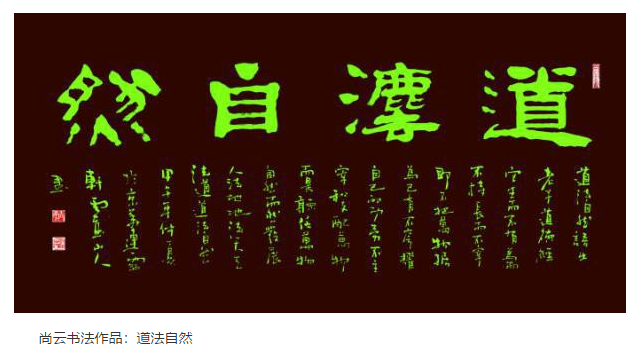
“唯善用古者能变古,以无所不包故能无所不扫”,尚云一直记着刘熙载在《艺概》里的这句名言,并在自己的作品中追求着变化和创新。为求吸收古人的精华,他曾连續三年到泰山去临写两千多字的《石峪金刚经》,体会到了《金刚经》在楷、隶之间,偶尔间杂篆意古拙朴厚,圆笔静谧安详的书体风格,以至在他创作的作品中,不经意间就会有那种痕迹的流露。从《明月有情常照我 清风无事乱翻书》和《浮烟观阁留归客 乐道临碑法古贤》两件作品可见一二。
"Only those who are good at using the ancient can change the old, so they can sweep everything." Shang Yun has always remembered Liu Xizai's famous saying in "Yigai", and pursues change and innovation in his own works. In order to absorb the essence of the ancients, he went to Taishan for three years to write the more than 2000 character "stone Valley Diamond Sutra". He realized that the diamond sutra was written in regular script and Li, and occasionally mixed with calligraphy and calligraphy, and the writing style of the pen was quiet and tranquil. We can see one or two things from the two works of "the moon always shines on me, the breeze is calm and the book is flipped without incident" and "the ancient sages of keledao near the Fuyan Pavilion".
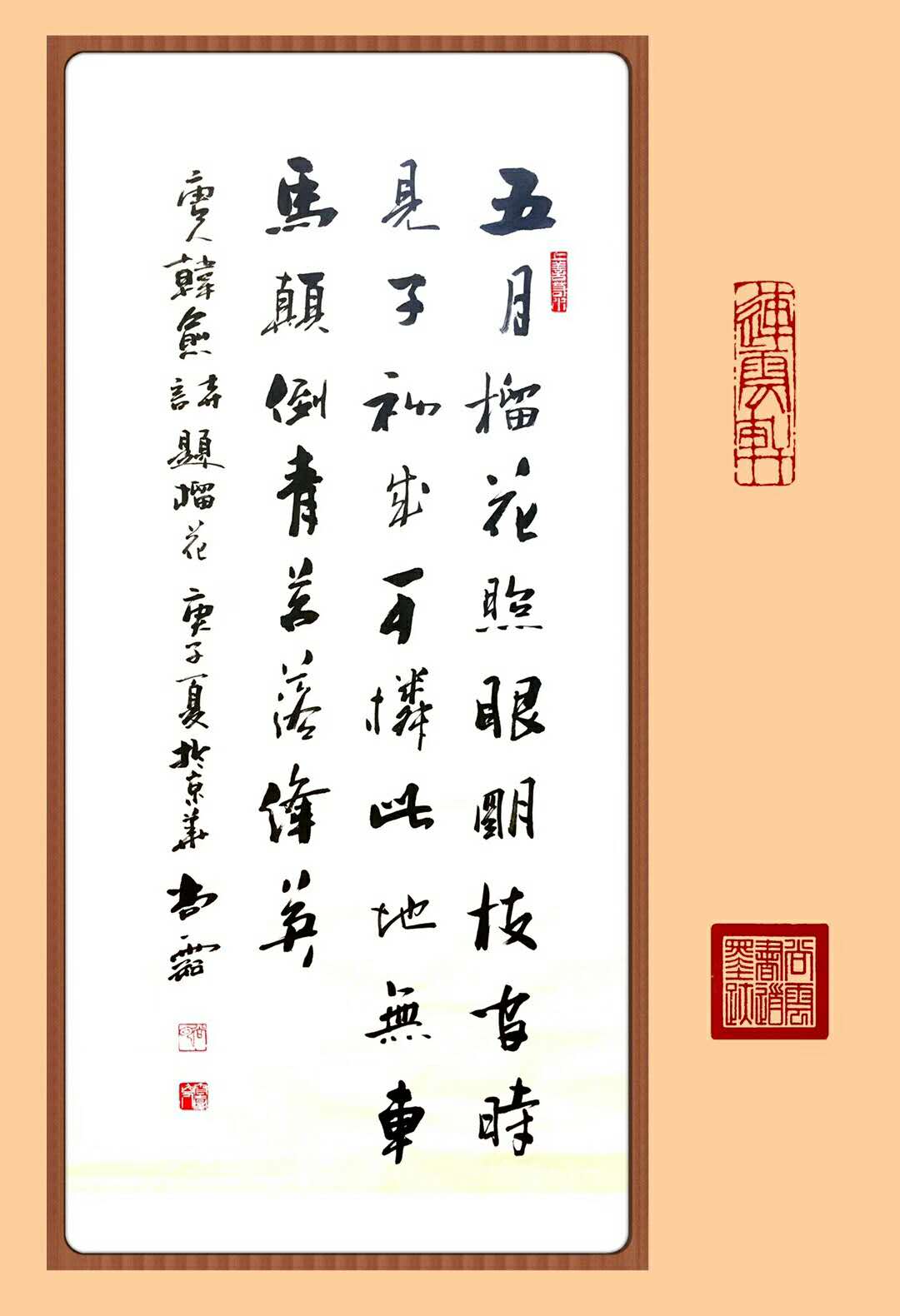
最能说明尚云先生书法渊源的是他碑味十足的一副对联《隶宗秦汉楷法晋唐寄情翰墨陶性金石》十六个大字,没有几十年功力则难求字字如斧削刀刻。
What can best explain the origin of Mr. Shang Yun's calligraphy is a couplet with the full flavor of his stele: "Li Zong Qin Han Kai FA Jin Tang calligraphy Tao Xing Jin Shi". Without decades of skill, it is difficult to find the characters like axe knife carving.
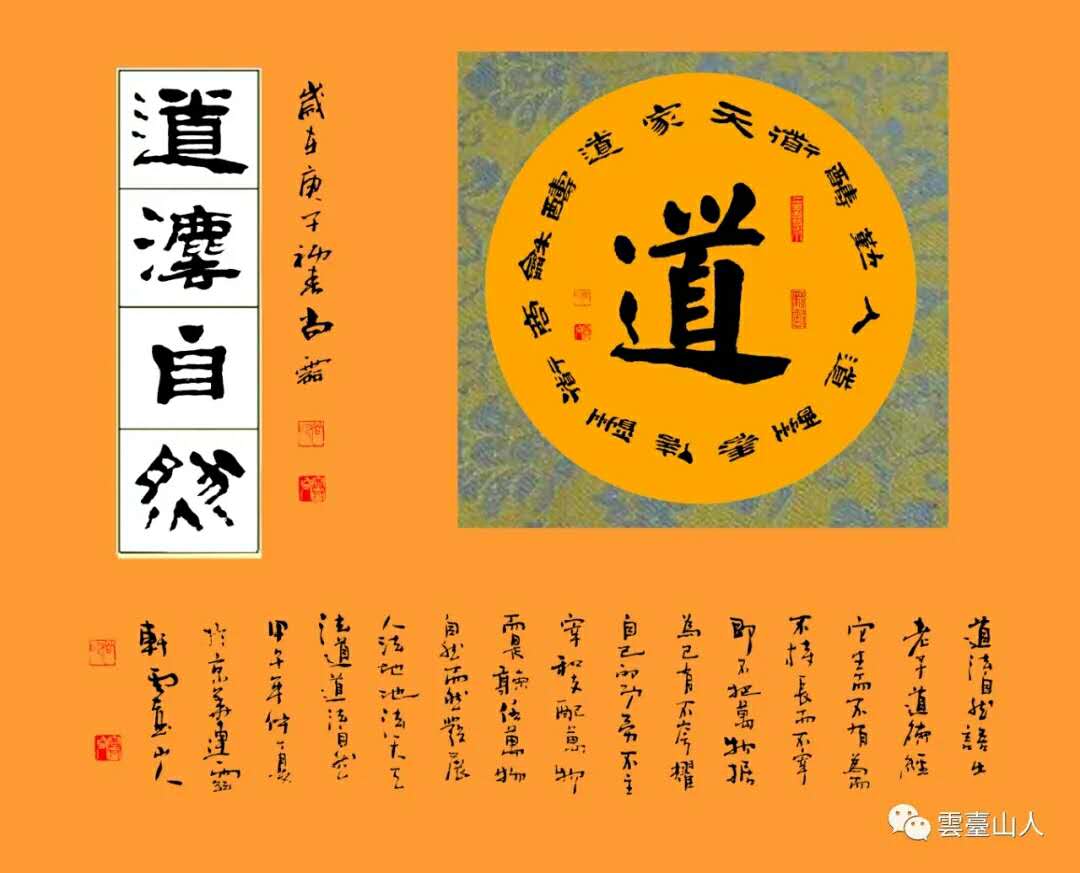
尚云先生出生于书香门第,从小受传统国学的熏陶,对《经》《史》《子》《集》多有涉猎,犹对《易经》心得颇深,在他的作品中也不时有老子道法自然的理念。
Born in a scholarly family, Mr. Shang Yun was influenced by traditional Chinese culture since childhood. He has a lot of knowledge about Jing, Shi, Zi and Ji. He has a deep understanding of the book of changes. In his works, he also has the idea of Taoism following nature from time to time.
看他的《龙》作品,斗方中用凸出他独具风格的隶楷相融的“龙”,后衬着30个百般变化的各体龙字。让人能感觉到大字龙的平稳谦恭,暗示着《易经》中的“潜龙勿用”。而后边那些各体龙字则象征着“飞龙在天”而变幻莫测。从中可品味到尚云先生对国学经典《易经》的精研之深和对老子哲学思想表达的巧妙。
Looking at his "dragon" works, we can see that his unique style of "dragon" is combined with Li and regular script, with 30 different forms of dragon characters. People can feel the stability and humility of the big character dragon, which implies that "the hidden dragon should not be used" in the book of changes. The characters on the back symbolize "flying dragon in the sky" and unpredictable. From this, we can taste Mr. Shang Yun's deep research on the classic of the book of changes and the ingenious expression of Laozi's philosophy.
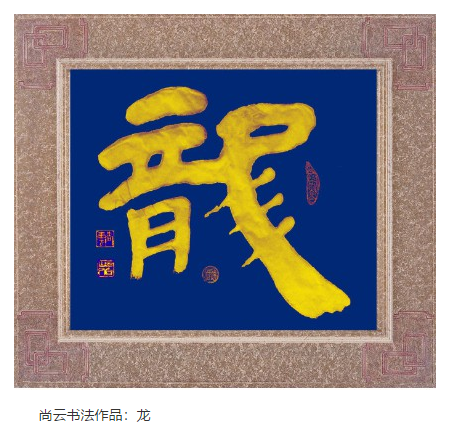
也许是受老子的道家思想影响,尚云先生在很多作品中都透出了淡泊名利崇尚自然的心态,金文对联《高山仰止疑无路 曲径通幽别有天》不只笔法高古宁静,更表达出了书法家远离喧嚣浮燥回归生态自然的理想。
Perhaps due to the influence of Laozi's Taoist thought, Mr. Shang Yun's attitude of indifference to fame and wealth and advocating nature is revealed in many of his works. The antithetical couplet of Jin Wen's "Gao Shan Yangzhi, doubting no road, winding road leading to secluded heaven" not only expresses the calligrapher's ideal of keeping away from the noise and floating dryness, but also expressing the calligrapher's ideal of returning to the ecological nature.
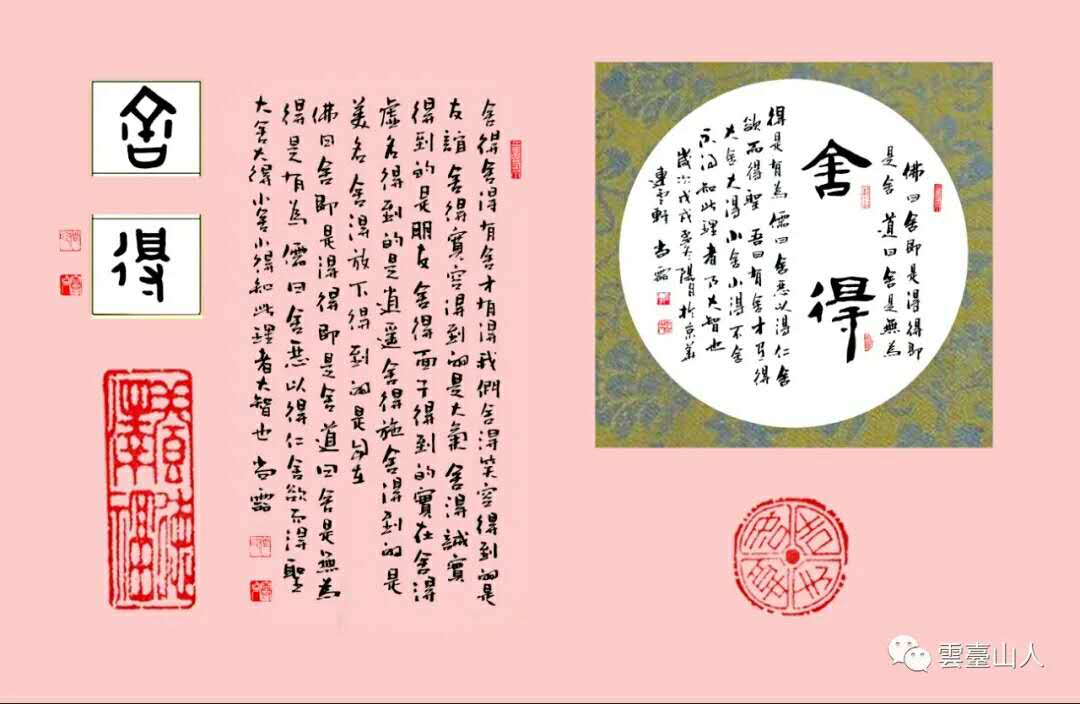
尚云先生的书法作品除书写中国古典精华的诗词文句,也常有自己的抒怀之作。作品集中的第一幅作品《墨凝》的两个酣淋行书字旁就配了一首自作诗:
Mr. Shang Yun's calligraphy works often include his own poems, besides writing poems and verses of China's classical essence. The first work in the collection, Mo Ning, has a poem written by himself beside the two characters in running script
临池墨丰尘不染
Linchi ink is rich in dust
气韵凝聚于笔端
Charm condenses in the end of the pen
笑将名利关门外
Laugh to shut fame and fortune
乐在芳窗种砚田。
Enjoy planting inkstone fields in fangchuang.
在尚云先生的作品中,让人读出了他对中国传统书法艺术的不懈追求,读出了他集古人前贤的独创之路,读出了他谦和低调的人品。但愿通过他的书法作品,能读懂他的思想和崇尙传统文化的用心。
In Mr. Shang Yun's works, people can read his unremitting pursuit of Chinese traditional calligraphy art, his original road of collecting ancient sages, and his modest and low-key personality. I hope that through his calligraphy works, we can understand his thoughts and the intention of advocating traditional culture.
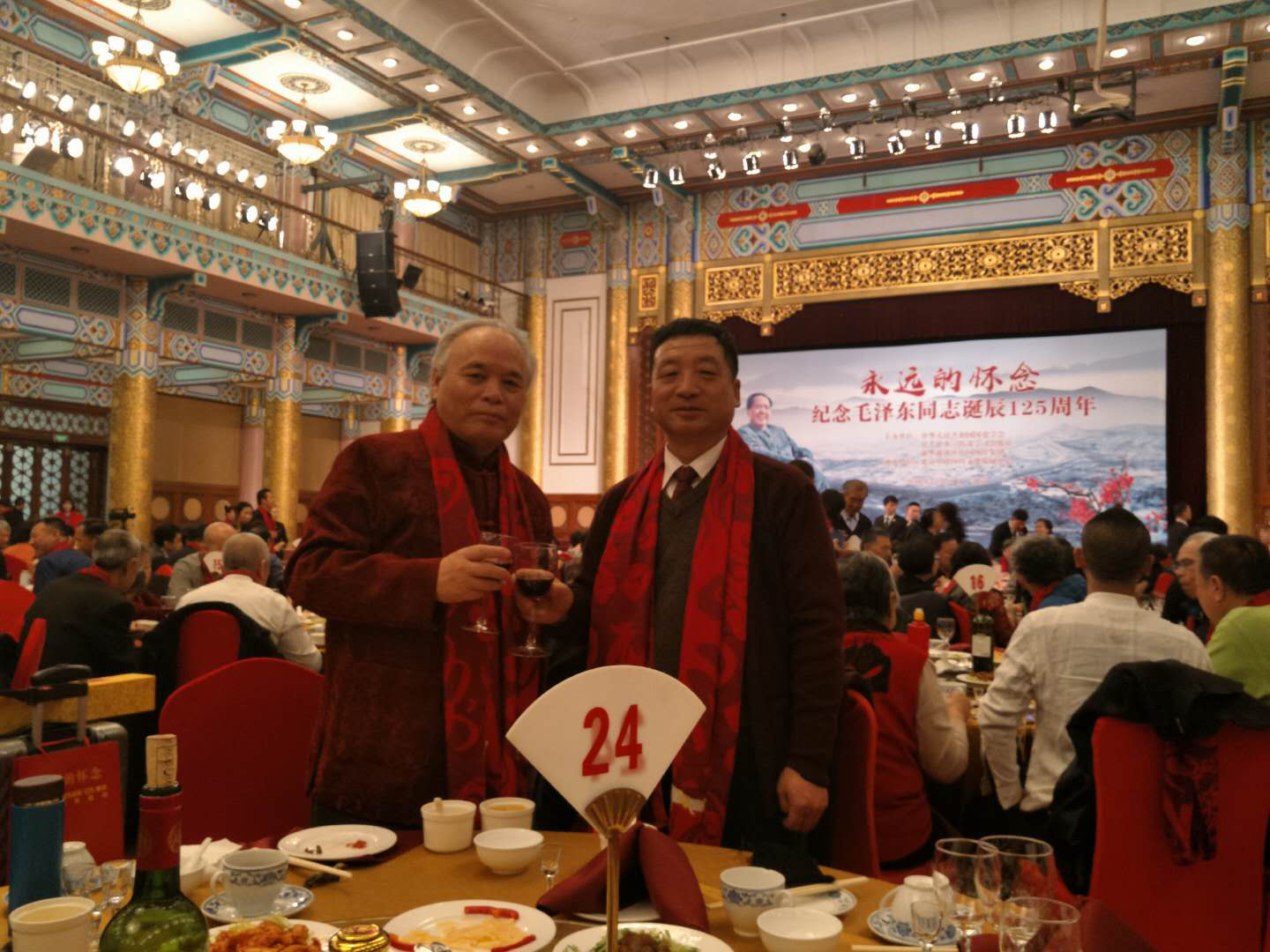
郝连成(右)与尚云先生(左)在纪念毛泽东诞辰125周年活动中
Hao Liancheng (right) and Mr. Shang Yun (left) are celebrating the 125th anniversary of Mao Zedong's birth


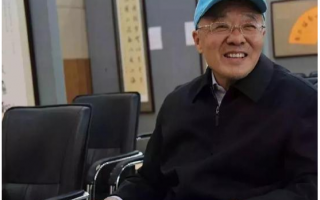
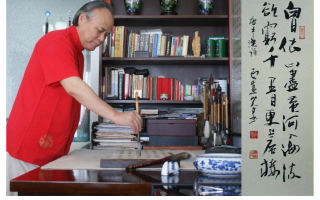
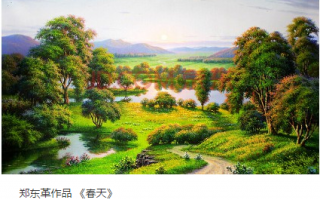

李春道
雁在蓝天